Research News
- SRM University- AP observes Research Day 5th Edition September 29, 2022
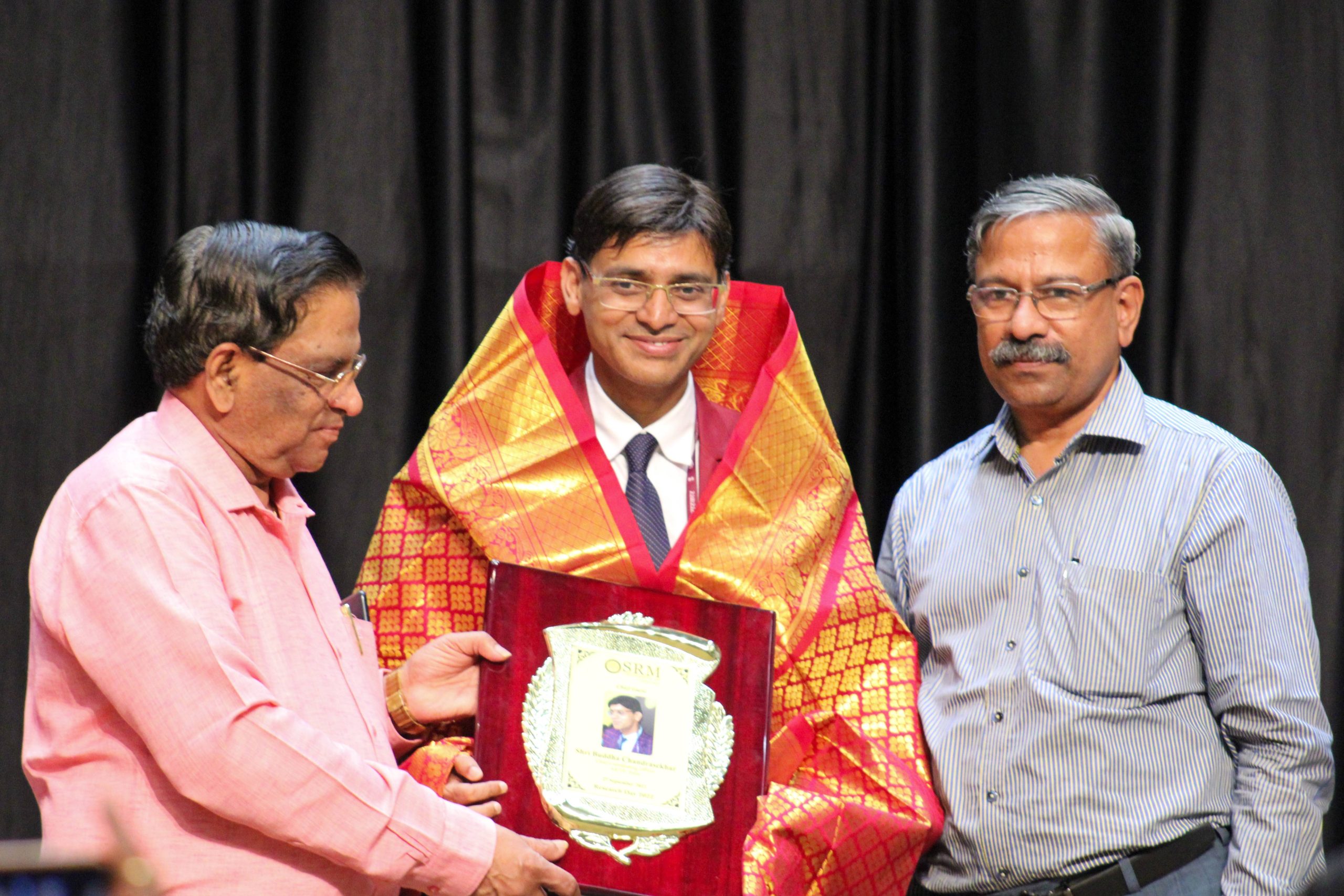 Research Day celebration at SRM University-AP continues to uplift the momentum of various research endeavors at the university and actuate the agenda of a research-oriented educational institution. The illustrious event held on Tuesday, September 27, 2022, fosters the exchange of information across disciplines, encourages extensive research projects, and appreciates innovative efforts in research. Dr Buddha Chandrasekhar, Chief Guest of the event, lauded the fundamental ideology of the initiative and highlighted the need to develop Indian students as world-class skilled workforce and entrepreneurs by providing real-time internship opportunities where industry and academy stay connected.
Research Day celebration at SRM University-AP continues to uplift the momentum of various research endeavors at the university and actuate the agenda of a research-oriented educational institution. The illustrious event held on Tuesday, September 27, 2022, fosters the exchange of information across disciplines, encourages extensive research projects, and appreciates innovative efforts in research. Dr Buddha Chandrasekhar, Chief Guest of the event, lauded the fundamental ideology of the initiative and highlighted the need to develop Indian students as world-class skilled workforce and entrepreneurs by providing real-time internship opportunities where industry and academy stay connected.Prof D Narayana Rao, Pro Vice-Chancellor, SRM AP, welcomed Dr Buddha Chandrasekhar, Chief Coordinating Officer, All India Council for Technical Education (AICTE), and other esteemed dignitaries. “Research and innovations are integral to growing and sustaining a large and vibrant society and economy. Innovations in science and technology are an integral part of the long-term growth and dynamism of any nation,” he stated and proceeded to elaborate how universities are proven as creators of new knowledge, innovative ideas, providers of skilled manpower, agents of social change, and symbols of international attention and research.
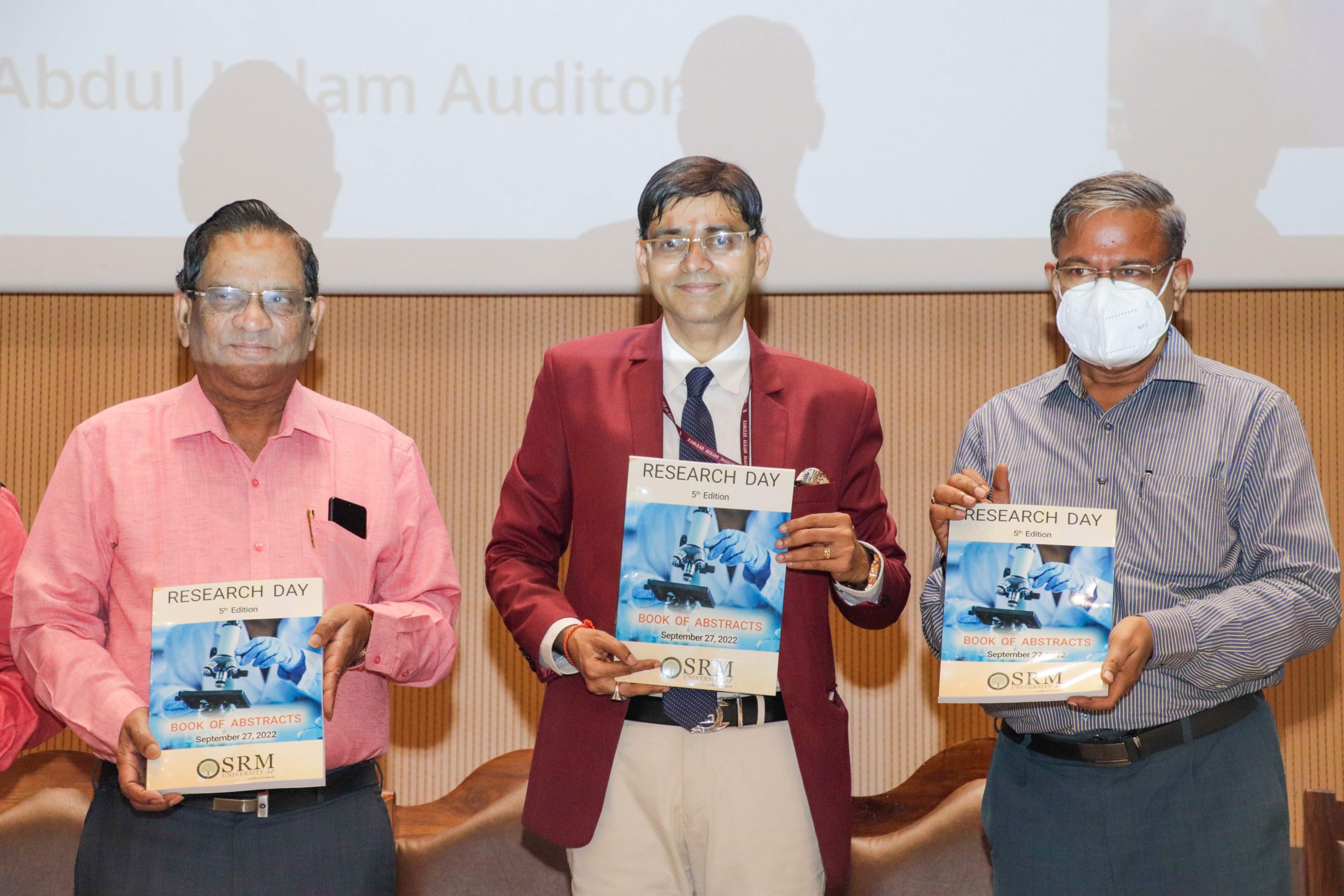 Dr Buddha Chandrasekhar shared his concerns regarding the widening gap between academy and industry and expressed his determination to reduce at least 5% unemployment in the country. He also demonstrated the websites 1crore aicte and aicte internship developed under the Ministry of Education and explained the arena of possibilities it opens to the youth of India.
Dr Buddha Chandrasekhar shared his concerns regarding the widening gap between academy and industry and expressed his determination to reduce at least 5% unemployment in the country. He also demonstrated the websites 1crore aicte and aicte internship developed under the Ministry of Education and explained the arena of possibilities it opens to the youth of India.As part of Research Day, students and faculty were advised to submit their research abstracts. A special issue of the research abstracts booklet comprised of all the selected abstracts was unveiled during the event. Gold medals and certificates have been awarded to qualified students and their mentors for their research work in various thematic areas. Dr Buddha Chandrasekhar displayed his enthusiasm to know further details of their research works and urged all the awardees to meet him in person after the event for a brief interaction.
Continue reading → - Applications of federated learning in computing technologies September 26, 2022
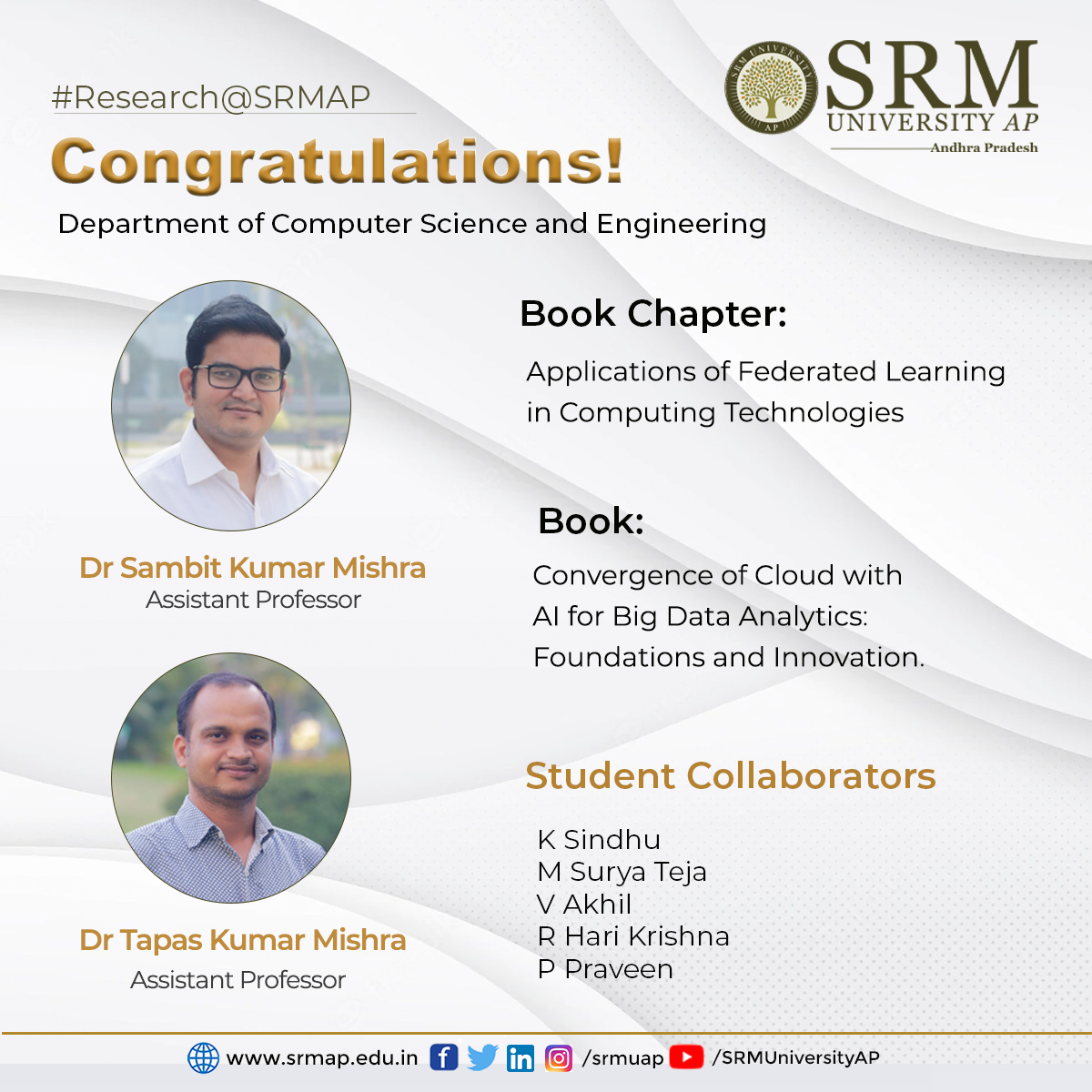
The Department of Computer Science and Engineering is delighted to announce that Assistant Professors, Dr Sambit Kumar Mishra and Dr Tapas Kumar Mishra, and the final year BTech students – Kotipalli Sindhu, Mogaparthi Surya Teja, Vutukuri Akhil, Ravella Hari Krishna, and Pakalapati Praveen – published a chapter titled Applications of Federated Learning in Computing Technologies in the scopus-indexed book titled Convergence of Cloud with AI for Big Data Analytics: Foundations and Innovation, a Wiley publication.
The book chapter describes the application of federated learning to various computing technologies. The federated learning concept is similar to the client-server model, where the client sends data to the server for processing and the processed data is again sent to the client. But, in federated learning, the clients are allowed separately to teach the deep neural network models with the local data combined with the deep neural network model at the central server.
Federated learning is a machine learning technique that trains the knowledge across different decentralized devices holding samples of information without exchanging them. The concept is additionally called collaborative learning. Researchers have used large frameworks for all the computations in the past years, and then they have moved to client-server frameworks.
It is also like a traditional centralised machine learning technique. All the local datasets are uploaded to a minimum of one server, so it assumes that local data samples are identically distributed. Because of its security and privacy concerns, it’s widely utilised in many applications like IoT, cloud computing; Edge computing, Vehicular edge computing, and many more. In the chapter, different applications of federated learning, their privacy concerns, and their definition in various fields of computing technologies like IoT, Edge Computing, Cloud Computing, Vehicular edge computing, etc. are presented. It will be of advantage to graduate students, researchers, academicians, institutions, and professionals that are interested in exploring the areas of intelligent computing systems.
- Industry project sanctioned to Prof G S Vinod Kumar September 23, 2022
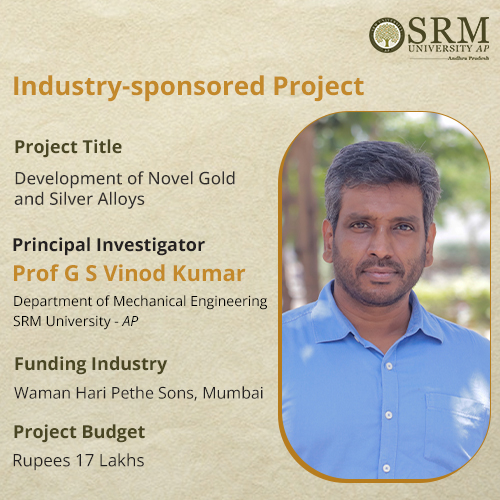
The research project titled Development of Novel Gold and Silver Alloys was sanctioned to Prof G S Vinod Kumar from the Department of Mechanical Engineering. The project was sanctioned by Waman Hari Pethe Sons, a leading Gold/Diamond jewellery manufacturing company based in Maharashtra, with a total outlay of Rupees 17 Lakhs. The tenure of the project is two years, from May 2022 to May 2024.
Prof Vinod Kumar’s research interests mainly revolve around the hardening of 22 carats and 24 carats gold for light-weight and high-strength jewellery and the novel processing of light alloy (Al and Mg) foam and studying the structure and properties. He has been intensely involved in the development of technologies for improving the hardness of 22k gold for weight saving and high strength in the cast and hand-made jewellery. This was jointly patented by SRM and Titan. He also has several industrial research partnerships and funded projects to his credit.
The present project aims to develop novel high carat gold (24,22 and 18 carats) for high-strength and light-weight jewellery applications and novel silver alloys (high pure (99%) or sterling silver (92.5%)) having better anti-tarnishing capability. It further aims to develop colour gold alloys (Black, violet and pink gold). The project also involves both the lab-scale and industrial development of the process for scaling up jewellery production of the gold and silver alloys.
- Highly-stable amine-free CsPbBr3 PNCs for display applications September 22, 2022
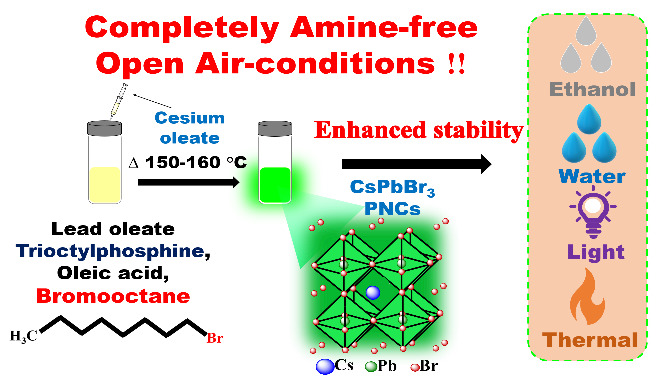
The Department of Chemistry is glad to announce that Dr Nimai Mishra, Assistant Professor, along with his research group comprising PhD scholars, Syed Akhil, Manoj Palabathuni, Subarna Biswas, Rahul Singh, have published an article titled Highly-Stable Amine-Free CsPbBr3 Perovskite Nanocrystals for Perovskite-Based Display Applications in the journal ACS Applied Nano Materials published by the American Chemical Society, having an impact factor of 6.14.
Colloidally synthesised cesium lead halide (CsPbX3; X=Cl, Br, and I) perovskite nanocrystals (PNCs) often suffer from poor ambient and environmental stability conditions, limiting their practical applications. The commonly used surfactant oleylamine is converted to oleylammonium cation, which pulls out the halide anion from the PNCs surface, thus disrupting the nanocrystal’s structural integrity and stability.
The research group has developed a simple, completely amine-free colloidal synthesis with a hot injection method in open-atmospheric conditions and introduced bromooctane as a bromine precursor to overcome the above issues. These, as synthesized amine-free PNCs, showed a photoluminescence quantum yield (PLQY) of around 60 %, and the size of PNCs is ~25 nm. Moreover, these amine-free PNCs were highly stable in the colloidal solution and thin films for more than five months in ambient conditions, with 66% of its initial PLQY.
In addition, these PNCs have shown exceptional stability under different environmental conditions, with 44 % of initial PL even after 6 hours of water treatment and 28 % of initial PL under ethanol treatment for 120 minutes. Furthermore, it has exhibited excellent photostability for 96 hours and retained 36 % of its initial PL under ceaseless UV light irradiation at 365 nm (8 W/cm2). Additionally, these PNCs have good stability upon heat treatment and maintained 34 % of initial PL upon heating up to 90 ºC.
The research team has also successfully fabricated the green-emitting down-conversion LED using these amine-free PNCs. Thus, they visualize that these amine-free CsPbBr3 PNCs are perhaps the ideal candidates for perovskite-based display applications.
Continue reading →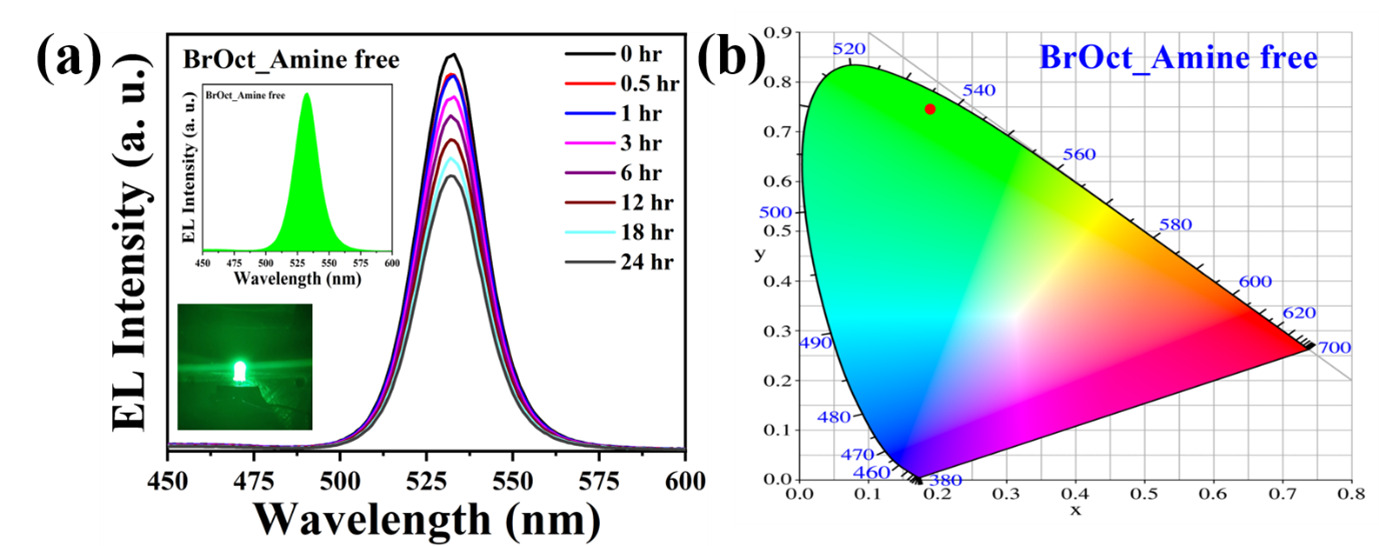
- Molecular design to store solar energy September 22, 2022
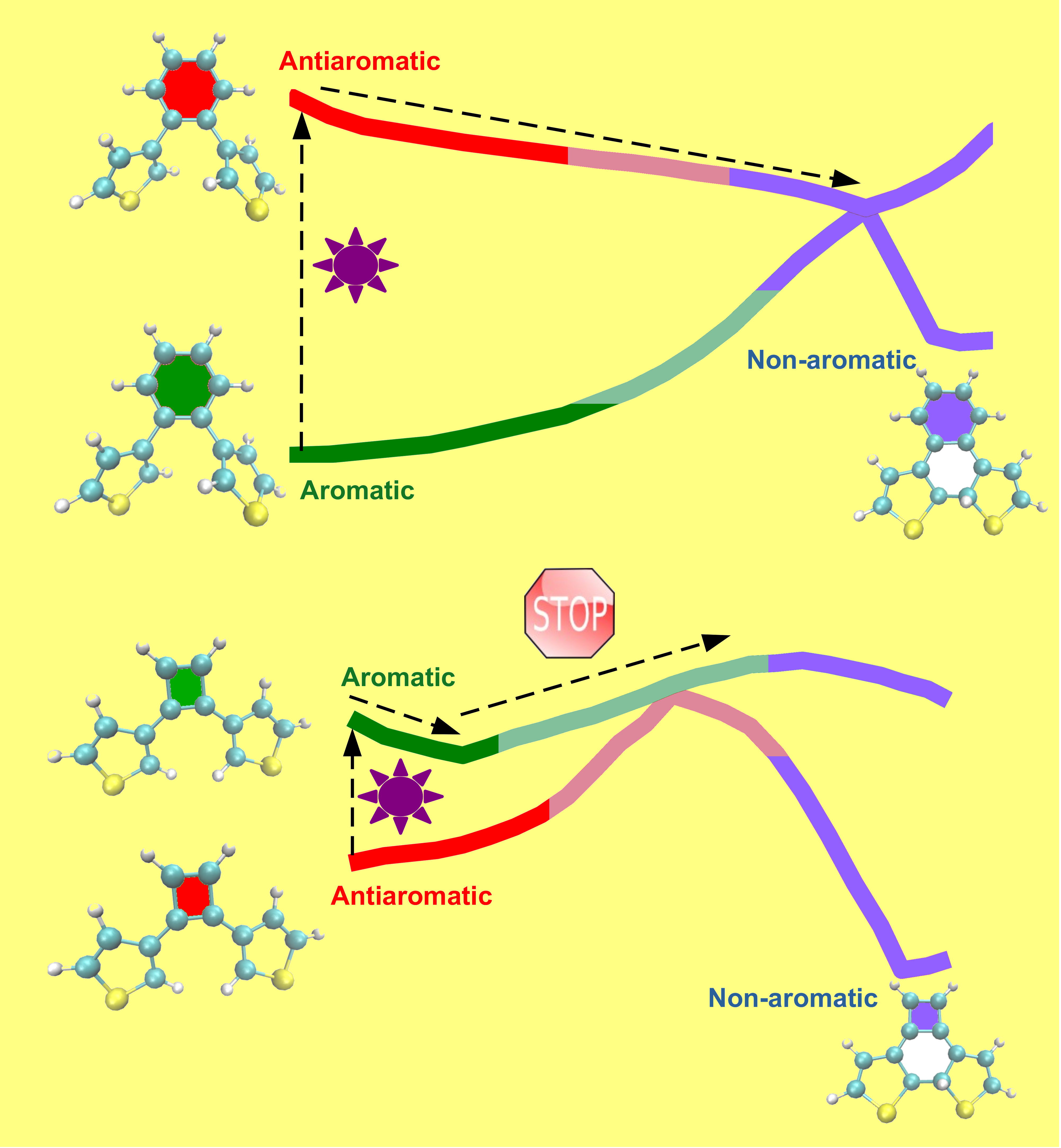 India has an ambitious target of achieving 300 GW of solar power by 2030. Conventional methods for producing solar power involve absorbing sunlight by a molecule and converting it directly into electricity. This is possible only during the daytime when sunlight is available. An interesting and complementary prospect is storing the absorbed solar energy by converting it into a different form of energy, such as chemical energy, which can then be transformed into electrical energy when sunlight is not available during the night-time.
India has an ambitious target of achieving 300 GW of solar power by 2030. Conventional methods for producing solar power involve absorbing sunlight by a molecule and converting it directly into electricity. This is possible only during the daytime when sunlight is available. An interesting and complementary prospect is storing the absorbed solar energy by converting it into a different form of energy, such as chemical energy, which can then be transformed into electrical energy when sunlight is not available during the night-time.To realise this prospect, Assistant Professor Dr Baswanth Oruganti from the Department of Chemistry has designed a molecule that can absorb solar energy and convert it into the chemical energy of the bonds. His paper titled Modulating the Photocyclization Reactivity of Diarylethenes through Changes in the Excited-State Aromaticity of the π-Linker has been published in the Journal of Organic Chemistry, on Cover Page, with an impact factor of 4.2. He is both the first author as well as the corresponding author of the article. For this project, he has collaborated with Prof Bo Durbeej, Division of Theoretical Chemistry, Department of Physics, Chemistry, and Biology (IFM), Linköping University, Sweden.
Abstract
In recent years, the concept of excited-state aromaticity and its applications in photophysics and photochemistry has attracted considerable research interest. Our study uses quantum chemical calculations to systematically investigate if the photocyclization reactivity of diarylethene switches can be controlled by the excited-state aromaticity of the ethene bridge. Indeed, we demonstrate that these switches can be transformed from being highly reactive to completely non-reactive by changing the excited-state character of the bridge from anti-aromatic to aromatic.
Generally, molecules tend to move from a high-energy state to a low-energy state, as the lowering of energy increases the stability of the molecule and makes it chemically less reactive. In contrast, the present study shows that it is possible to chemically transform a molecule from a low-energy (aromatic) state to a high-energy (non-aromatic) state by absorption of light. This reaction occurs via a high-energy (anti-aromatic) electronically excited state of the molecule induced by light and has potential applications for storing solar energy in the form of chemical energy.
One challenge in the design of molecular solar energy storage systems, such as the diarylbenzene designed in the study, is that it is difficult to store solar energy for a longer period due to the instability of the newly formed chemical bonds at room temperature. To store solar energy for a longer period, one needs to compromise on the amount of energy stored in the bonds. In this regard, in the future, researchers are planning to optimise their molecular design by finding the right balance between the amount of solar energy stored and the time period for which it can be stored.
Continue reading → - Presented paper at the East Asian Economic Association Convention September 21, 2022
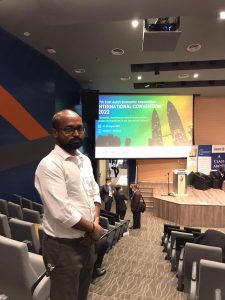
Dr J Vineesh Prakash, Assistant Professor, Department of Economics, presented a paper at the 17th East Asian Economic Association (EAEA) convention that was held on August 27-28, 2022 at Sunway University, Kuala Lumpur, Malaysia.The theme of the convention was “Growth, Resilience and Sustainability: Asian Dynamism in an Uncertain World”.
The East Asian Economic Association (EAEA) was founded in 1987 as the first international academic organisation devoted to East Asian economics. The international convention is its annual conference where papers for publication in the Asian Economic Journal are discussed.
Dr Vineesh presented the paper titled Does Business Group Affiliation Enhance Firm-Level Profitability? Evidence from Indian Automotive Component Industry, that addresses the growing competitive and volatile nature of economic sphere by testing the persistence of profit in a highly evolving emerging country environment such as India.
Emerging economies, such as India, confront different challenges than developed economies. The country has witnessed diverse regulatory environments, varying from highly regulated to more liberal ones. The more liberal environment coupled with the entry of overseas players into this realm has a definite impact on the existing industrial structure, thereby creating a volatile, ever evolving competitive environment.
The paper aims to address this issue and seeks to validate the part played by RBV in generating inimitable capabilities in a context-specific setting of a particular industry, i.e., the Indian automotive component industry. It also analyses the part played by business group affiliation in the post-reform era and its influence on profitability.
The paper found that profitability has moderate-to-high persistence and the variables, such as business group firms with overseas investments, export intensity, firm size, labour productivity growth, and past R&D intensity, have a contributory role in enhancing a firm’s profitability. Other variables such as business group affiliation, firm’s age, firm’s leverage, capital intensity, and A&M intensity have found to exercise a detrimental impact on the firm’s profitability.
Social implications of the research
The results, as reported in this paper, have some important implications for different stakeholders like managers, regulators, policymakers, etc. The finding that past R&D intensity has a positive influence on current profitability is significant to managers so they can allocate appropriate resources to fund such projects without many apprehensions.
The proof that labour productivity growth and profitability are positively related implies that managers could further focus on various in-house skill development programs to enhance labour productivity.
The finding of a positive influence of exports on profitability indicates that managers could further explore the external markets to boost up profitability as export markets are reportedly far more rewarding.
The discovery of moderate to high profit persistence has an important implication for regulators in order to facilitate healthier competition among firms. The moderate to high profitability persistence implies that the regulators have not managed to instill a reasonable level of competition in the industry through carefully crafted interventions, thereby facilitating its growth.
Continue reading → - Mental health of school students during the COVID-19 pandemic in India September 20, 2022
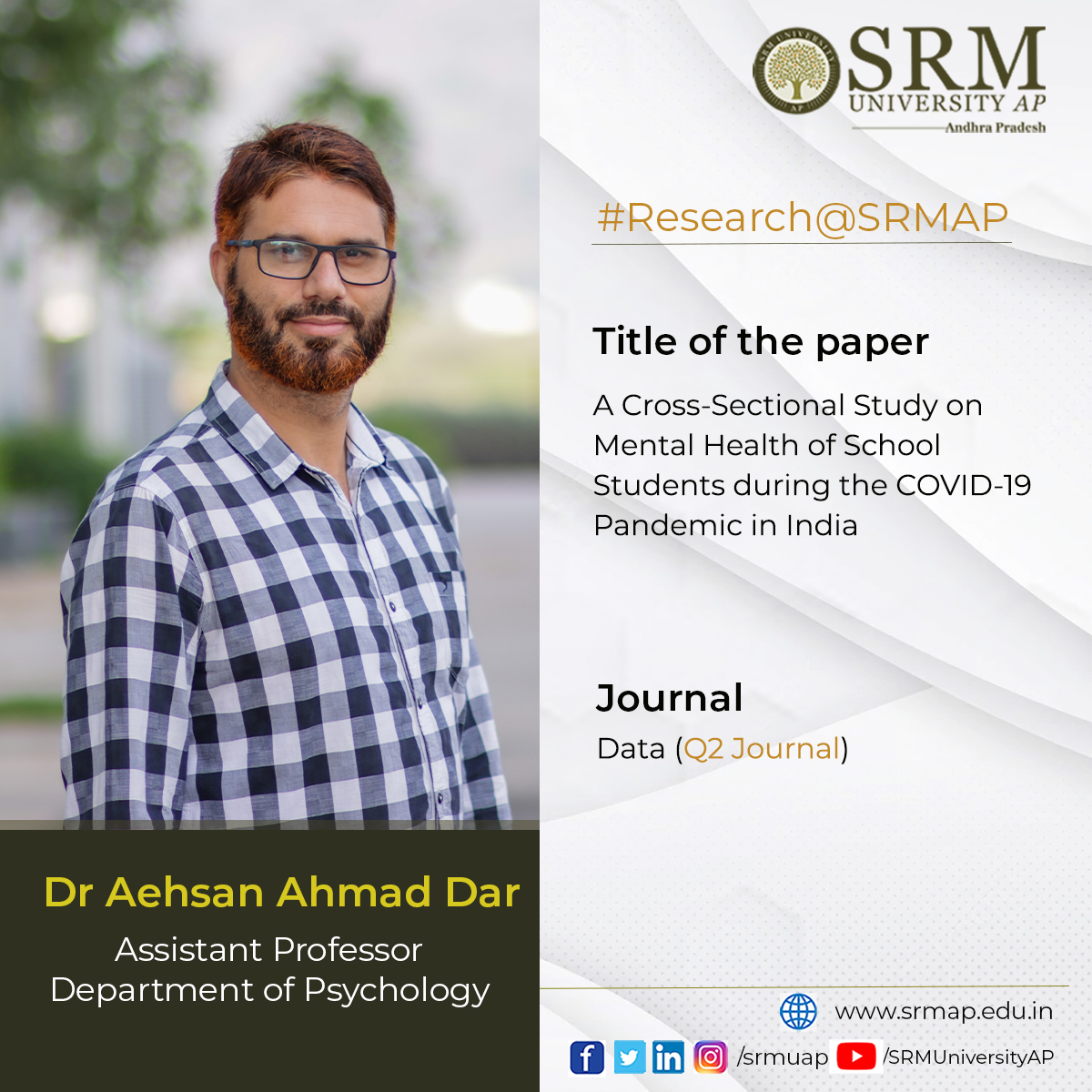
Dr Aehsan Ahmad Dar, Assistant Professor, Department of Psychology, published the article titled “A Cross-Sectional Study on Mental Health of School Students during the COVID-19 Pandemic in India” in the journal Data in collaboration with academicians from different universities across the country and abroad.
The present study estimated the mental health of school students during the COVID-19 pandemic. The findings revealed that the COVID-19 pandemic caused stress which increased the levels of anxiety and depression among the students. However, social support from family and friends was found to be a protective factor for mental health.
The findings of the research will serve as a reliable source of information for mental health professionals and policymakers to better understand the impact of the COVID-19 pandemic and other traumatic experiences on mental health. Therefore, necessary efforts are suggested to provide mental health support services to prevent the development of mental disorders.
Dr Aehsan’s future research plan is to study the mental health of youth and ascertain its risk and protective factors. About 19% of the world’s children live in India, which constitutes 42% of the total Indian population, and nearly half of these children are vulnerable and need care and protection. Due to various traumatic experiences, stress has increased among young people resulting in the development of various physical and mental disorders.
His research will focus on the pathogenic (posttraumatic stress disorder, depression, anxiety, somatization) and salutogenic (posttraumatic growth and resilience) consequences of trauma to help the youth withstand adverse experiences to develop psychological competence. The research will provide insights into the mental health status of youth that would be helpful for the administration, policymakers, and other voluntary organizations to understand effective ways to devise and implement the best intervention programs for maximizing mental health protective factors and minimizing its risk factors.
Continue reading → - Occurrence, environmental risks, and biological remediation of Triclosan September 16, 2022
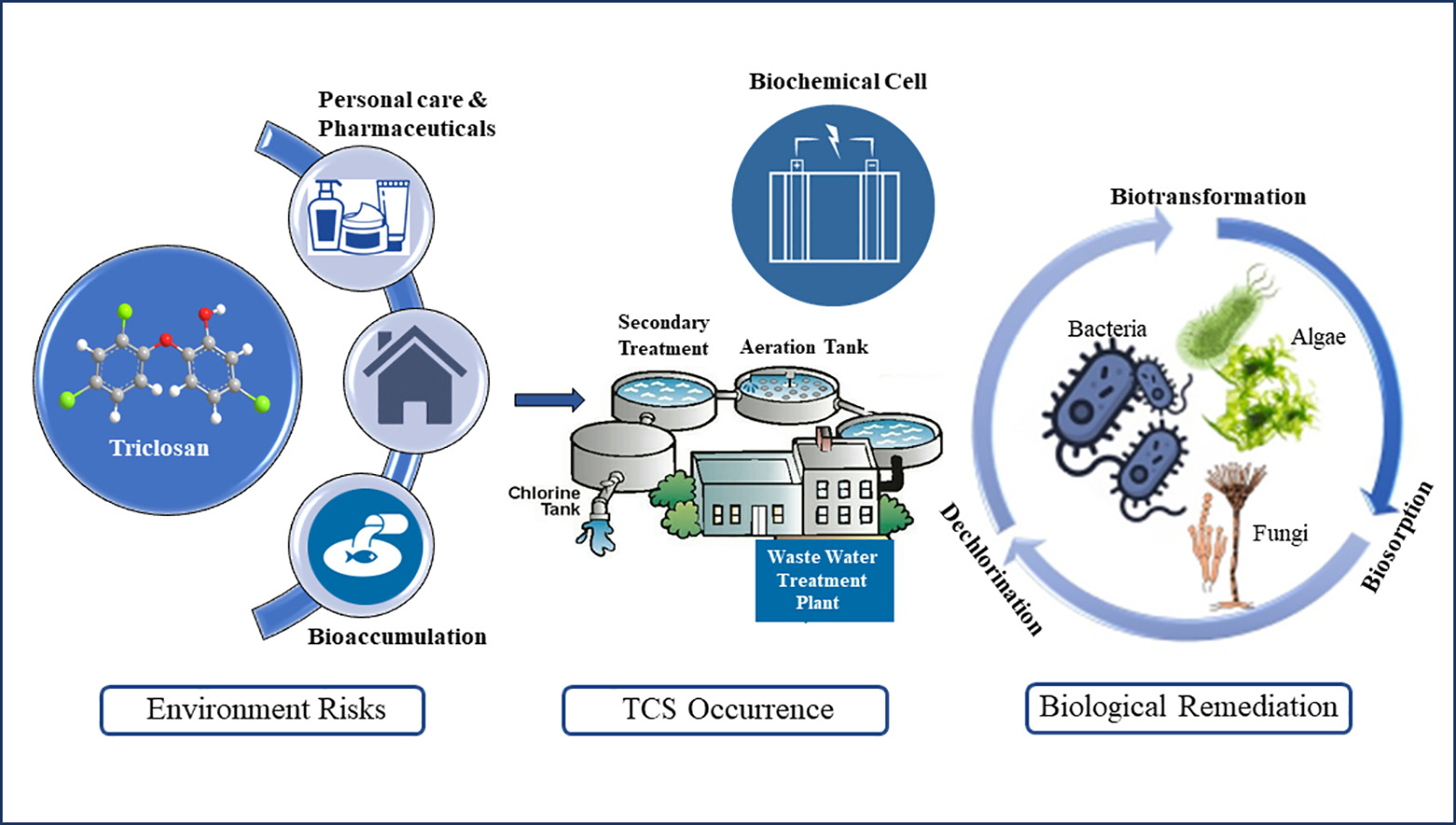
The Department of Environmental Science is glad to announce that Assistant Professor Dr Pankaj Pathak and her PhD Scholar Mr Gopa Nandikesh have published an article titled “Occurrence, environmental risks and biological remediation mechanisms of Triclosan in wastewaters: Challenges and perspectives” in the Journal of Water Process Engineering having an Impact Factor 7.34. The paper was published in collaboration with Dr Lakhveer Singh, Sardar Patel University, Himachal Pradesh.
The paper makes a comprehensive understanding of the disadvantages and consequences associated with the excessive use of Triclosan (TCS), an anti-microbial agent widely used in pharmaceutical and personal care products (PPCPs). The article also suggests various ways to achieve the bioremediation of Triclosan using microbial degraders and the different challenges associated with such practices.
The extensive use of TCS in PPCPs has increased over the past few decades, and its sizeable production and consumption are causing adverse effects on the environment and humans. TCS has been made into the list of emerging micropollutants (EMPs) due to its omnipresence in water resources and even in biological samples such as urine and breast milk. Therefore, it is imperative not only to understand the current status of TCS pollution but their occurrence, exposure routes, and environmental risks to identify remediation technologies for mitigating TCS.
Their research targets to provide cumulative data on the abundance of emerging TCS in water resources and its associated health burdens simultaneously. It is identified that TCS remediation can be achieved through advanced physical and chemical methods such as enzyme oxidation and ozonation. However, there are drawbacks such as high energy consumption and the formation of toxic by-products.
The article endeavours to provide an in-depth understanding of the biological remediation of TCS by microbial degraders as well as its superiority over other remediation techniques. Insights into the various microbial communities such as bacteria, algae, and fungi and their unique bioremediation mechanisms are comprehensively summarised. Moreover, challenges associated with existing bioremediation methods and future perspectives are also discussed in the present work.
Continue reading → - Dr Saleti Sumalatha published two patents in a row September 16, 2022
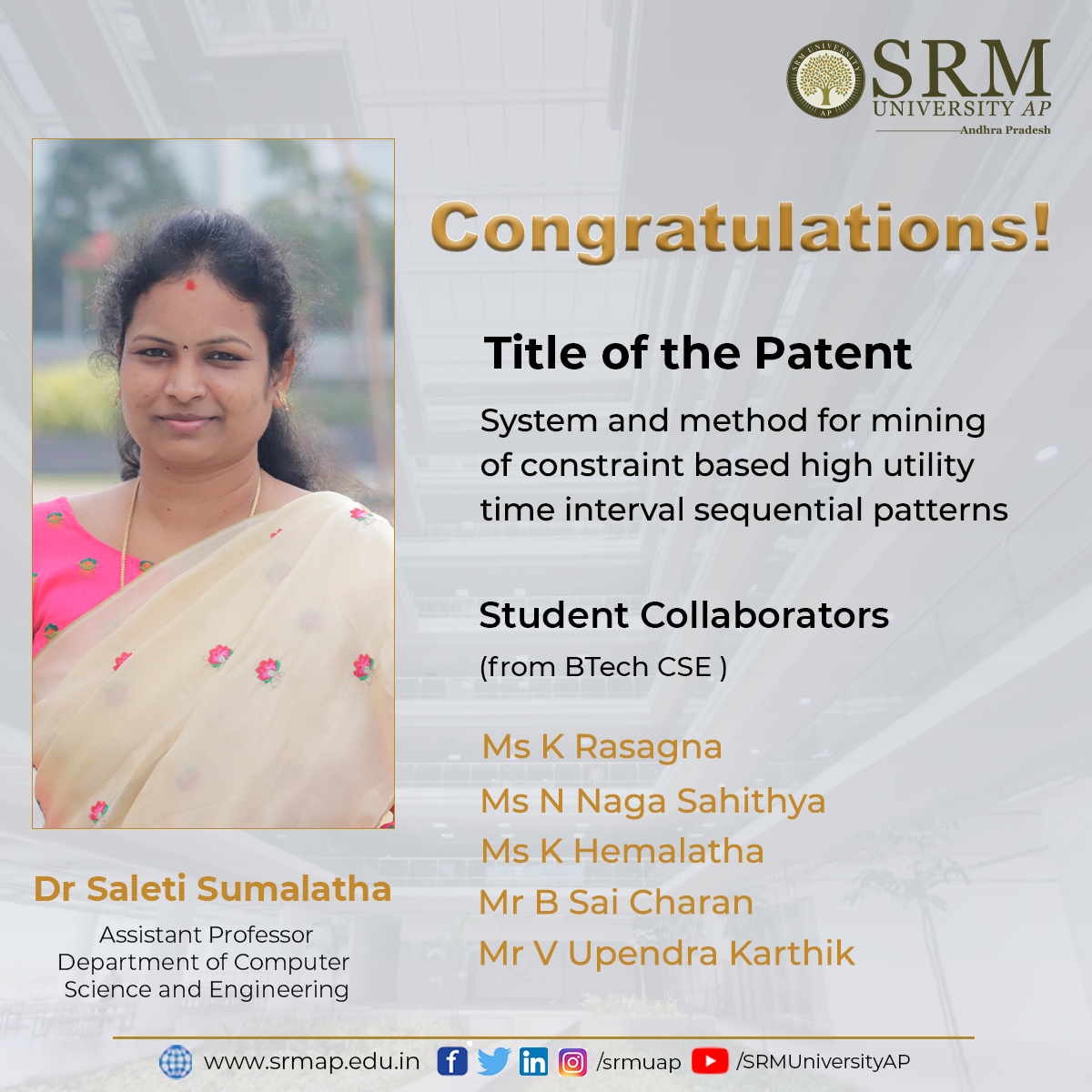
The Department of Computer Science and Engineering is glad to announce that Assistant Professor Dr Saleti Sumalatha and her students got two of their patent applications published in a row. The patent titled “System and method for mining of constraint based high utility time interval sequential patterns” (Application number: 202241044001) was published in collaboration with the BTech students; K Rasagna, N Naga Sahithya, K Hemalatha, B Sai Charan, and Upendra Karthik.
The main intention of the proposed system is to discover the sequences that include the time period between the purchases of each item. For example, if we consider a shop which sells some groceries like Grains, Milk, Yogurt, Bread and Eggs as the set of items in the database. Now, the main aim is to find the time period between the purchases of particular items that are being sold. From this, the shop owner can easily maintain the stock of completed items according to the time period.
For example, an output sequential pattern including time intervals of the form indicates that a customer who purchased item x also bought item y after three months and visited the store again after five months to buy item z. It considers the same utility threshold for each of the items in the database, which shows that each item is assumed to have the same unit profit. This is not convincing as each item is different in real-time applications and should not be treated equally. For example, the sales of” Gold bangles” will produce more profit than the sales of” Cotton Jeans”. In view of this, the research proposes UIPrefixSpan-MMU.
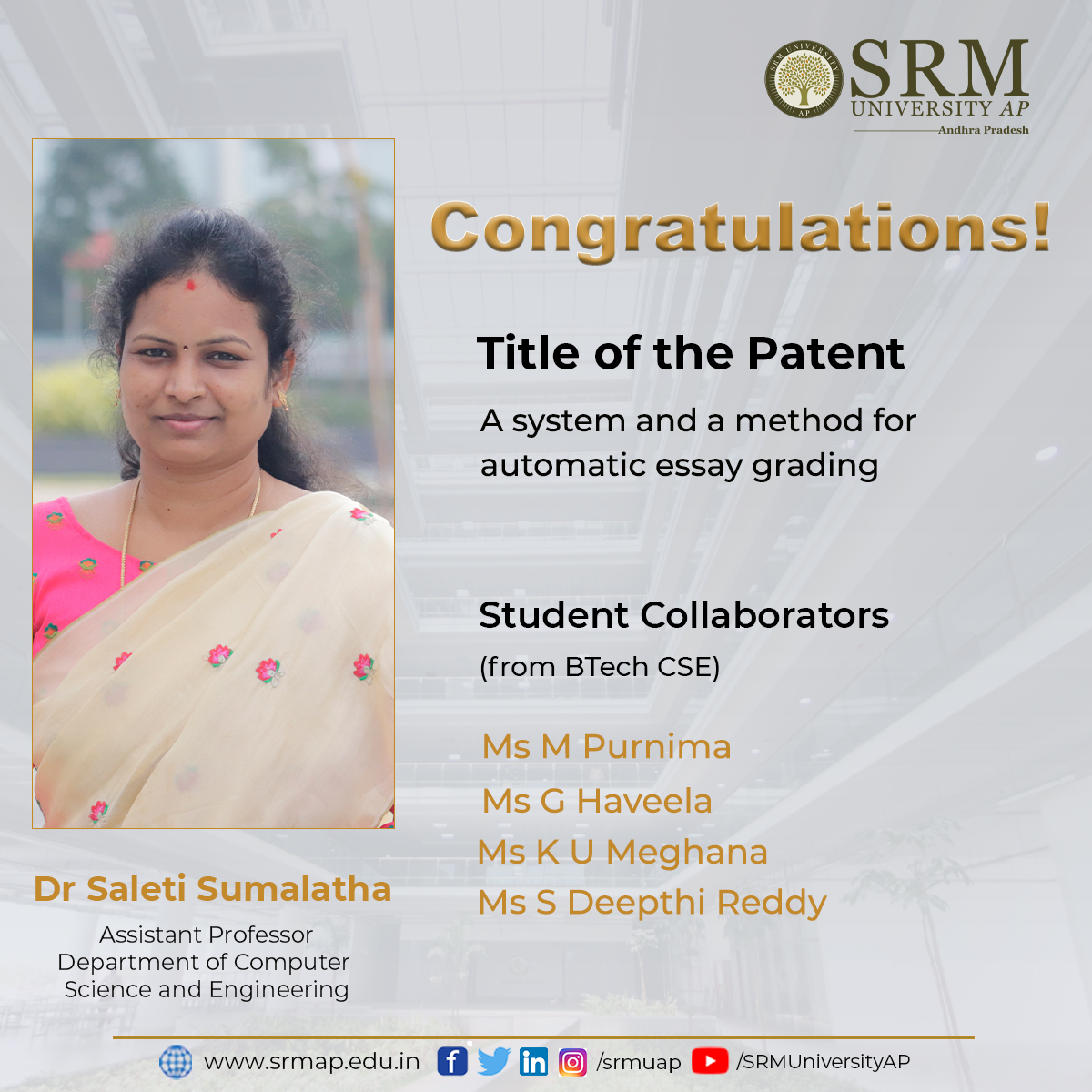
The other patent titled “A system and a method for automatic essay grading” (Application number: 202241043045) was published in collaboration with M Purnima, G Haveela, K U Meghana, and S Deepthi Reddy. Essay grading systems are being adopted by different organisations to reduce the hectic workload from a teacher’s point of view. They made a model which is trained with datasets containing different essay topics and numerous essays with scores varying in a wide range.
Essay grading systems will not only save the time for evaluation but also give accurate results. The output of the system will be quick such that it could evaluate many essays and get trained. This system benefits both the student and the teacher as well. Their model predicts the scores of the essay by comparing them with the features extracted from the trained data. This model can be used to reduce the effort of teachers to grade many essays in a limited time. The work of grading will be fastened and accurate.
Continue reading → - Effective combinatorial drug therapy for prostate cancer September 13, 2022

Prostate cancer is the second most frequent solid organ malignancy in males worldwide. The risk of causing prostate cancer is increased by age, race, and family history. The U.S. FDA has approved the six most successful drugs, viz., docetaxel, sipuleucel-T, abiraterone, enzalutamide, cabazitaxel, and radium-223. Despite these approved therapies, the disease state remains lethal. The recent publication of Dr Imran Uddin, Post Doctoral Fellow, Department of Physics, “Targeted non-AR mediated smart delivery of abiraterone to the prostate cancer” proposes a combinatorial system against prostate cancer using the FDA-approved drug abiraterone. The paper was published in the Q1journal PLoS ONE having an Impact Factor of 3.75. The research was done in collaboration with Dr Mohd Sajid Khan, Associate Professor, Aligarh Muslim University.
Although abiraterone is an excellent anticancer agent, it causes several side effects and becomes irresponsive after a few months of therapy. They developed a nanomedicine, along with two other components, that will deliver a substantially small dose of abiraterone for treating the same stage of cancer, and the drug will also not be resistant to the cancer cells. The delivery system delivered the drug at a specific site and modified its mode of action. The low dose of abiraterone will also not cause any substantial side effects. The combo was found to be highly biocompatible, nontoxic, and effective.
The proposed nanomedicine with established drug abiraterone, gold nanoparticles, and antibodies against cancer-promoting protein synergistically acted on prostate cancer cells. This synergism potentiated the effect of abiraterone at a very low concentration because other entities also acted via different routes and weakened the cancer cells. The low dose minimized the side effects and maintained patient compliance. This drug was delivered directly to the target, which enabled it to adopt different methods to act on cancer cells. Therefore, the results were promising but further needed to be validated in pre-clinical and clinical studies.
In future, Dr Uddin intends to focus on interdisciplinary sciences. His plans include studying the interface of biology with inorganic nanomaterials, understanding the underlying biological process, and developing new industrially relevant nanomaterials and biomedical aspects. It involves developing nano biosensors for biomolecule detection through the effective integration of the best approaches and expertise in sensor engineering with the vision to take a lead in shaping the future of biomedical monitoring systems. The timely integration of such interdisciplinary approaches will consolidate the application of Lab-on-a-Chip devices for automated biomolecular monitoring.
Abstract of the Research
Prostate cancer is the second-deadliest tumour in men all over the world. Different types of drugs with various delivery systems and pathways were developed, but no one showed prominent results against cancer. Meanwhile, nanotechnology has shown good results against cancer. Therefore, in the given study, citrate mediated synthesized gold nanoparticles (CtGNPs) with immobilized survivin antibodies (SvGNPs) were bioconjugated to the substantially potent drug abiraterone (AbSvGNPs) to develop as a combinatorial therapeutic against prostate cancer. The selected drug abiraterone possesses exceptionally good activity against prostate cancer, but cancer cells develop resistance against this drug and it also poses several severe side effects. Meanwhile, survivin antibodies were used to deliver AbSvGNPs specifically into cancer cells by considering survivin, an anti-apoptotic overexpressed protein in cancer cells, as a marker. The surviving antibodies have also been used to inhibit cancer cells as an immunotherapeutic agent. Similarly, CtGNPs were discovered to inhibit cancer cell proliferation via several transduction pathways. The given bioconjugated nanoparticles (AbSvGNPs) were found to be substantially effective against prostate cancer cells.
Continue reading →

